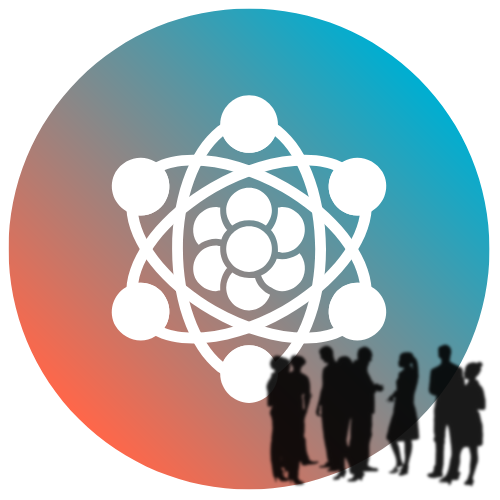In technology, power often hides in what connects rather than what competes. The same holds true in voice. For years, VoIP providers have raced to out-feature each other — better interfaces, smarter analytics, more integrations — yet the biggest differentiator isn’t novelty. It’s interoperability. In a world defined by hybrid work and endless app ecosystems, open standards have become the quiet currency of trust, growth, and longevity.
A short history of closed systems
Early internet telephony was a patchwork of proprietary islands. Vendors built their own signaling methods, codecs, and routing protocols. Calls flowed smoothly only within a brand’s ecosystem, forcing businesses to choose allegiance rather than flexibility.
That model worked — until it didn’t. As cloud adoption spread and remote work multiplied endpoints, the “walled garden” began to crack. Customers wanted their contact centers to talk to CRMs, their mobile apps to sync with softphones, and their collaboration platforms to connect to external partners. Closed systems couldn’t keep up.
Enter SIP (Session Initiation Protocol) and RTP (Real-Time Transport Protocol) — the backbone of modern VoIP interoperability. Together, they standardized how calls are set up, managed, and transmitted, allowing devices and applications from different vendors to work as if they spoke the same native language.
Open standards as an economic advantage
At first glance, interoperability looks like a technical virtue; in reality, it’s a business strategy. Open standards expand total market size. When products communicate freely, innovation compounds instead of competes.
For enterprises, interoperability lowers switching costs — a CFO’s favorite phrase. Businesses can migrate providers without re-wiring their entire architecture. That reduces lock-in, raises negotiating power, and makes long-term planning less risky.
For vendors, it broadens addressable markets. A small VoIP startup that adheres to SIP can integrate with thousands of existing devices and apps without bespoke engineering. The standard becomes the network effect.
The customer experience dividend
End users rarely think about protocols, yet they feel the difference every day. When open standards underpin a system, calls connect faster, conferencing tools link more smoothly, and integrations behave consistently.
Imagine a support team using a SIP-based VoIP platform connected to a CRM. As soon as a customer calls, the system identifies the number, retrieves the account record, and displays previous tickets — all before the agent says hello. That fluidity isn’t magic; it’s standardization.
Interoperability also supports accessibility and inclusion. Open APIs make it easier to plug in translation, transcription, and assistive-voice tools. The technology grows outward instead of upward, adapting to people rather than demanding that people adapt to it.
Vendor lock-in versus ecosystem trust
Every vendor faces a tension between control and compatibility. Closed systems can deliver smoother initial experiences, but over time they breed dependency. Open systems may require more discipline, yet they earn loyalty by giving customers freedom.
Businesses are starting to notice. Procurement teams now weigh openness as heavily as uptime or price. They want to know:
- Can this platform integrate with our existing PBX or UCaaS tools?
- Are APIs documented and accessible?
- Does the provider use standard codecs or proprietary ones?
The answers increasingly determine contract renewals. Trust, in this market, looks like flexibility.
Regulation nudging the same direction
Governments and industry bodies are reinforcing this shift. European digital-market regulations now emphasize interoperability to prevent monopolistic ecosystems. In telecom, mandates around STIR/SHAKEN for caller authentication rely on open specifications precisely so every carrier can participate.
As compliance demands grow — around privacy, accessibility, and cross-border data transfer — proprietary isolation becomes a liability. Open frameworks evolve faster because more eyes, and more stakeholders, maintain them.
The technical frontier: APIs and composability
The next stage of interoperability moves beyond SIP. Businesses want composable communication — the ability to embed calling, messaging, and analytics directly into custom workflows. Open APIs make that possible.
Platforms exposing RESTful endpoints or WebRTC hooks let developers build voice-enabled applications without reinventing infrastructure. For example, a logistics company can integrate live driver calls into its dispatch dashboard, or a healthcare provider can embed secure video consults inside its patient portal — all powered by open standards beneath the surface.
This model shifts VoIP from a standalone service to an ingredient. And ingredients, unlike products, scale infinitely.
Why open always wins long-term
History shows that openness may evolve slower, but it endures longer. TCP/IP beat proprietary networking. HTML outlasted custom web plugins. The same trajectory now unfolds in VoIP.
Closed systems can dazzle, but open ones define the rules others eventually follow. In communication — where trust, reach, and reliability matter more than exclusivity — the ability to connect freely will always trump the illusion of control.
The real takeaway
Interoperability isn’t just an IT checkbox; it’s a business philosophy. It says: we expect to grow, to integrate, to adapt. Companies that build or buy with that mindset position themselves for the future — one where voice is just one thread in a vast digital conversation.
VoIP began by breaking the phone network free from wires. Open standards are now breaking it free from walls.

